Medici Money Read online
Page 4
The merchant watches patiently as the quill scratches out his entry. Literacy is on the increase. The silence of men concentrating on numbers, dates, is invaded by the clatter of carts in the street, the cackle of caged poultry, the occasional shouts of the town crier. Downtown Florence is a busy place. In the Mercato Vecchio, a couple of hundred yards away, bales of silk and barrels of grain are changing hands. The bakers shovel their bread from the communal oven.
Once completed, the entry is read out loud. Any member of the Exchangers’ Guild found to have destroyed or altered his accounts is expelled without appeal. Whereas the Church’s rules may be open to debate, these are not. And when a banker dies leaving no one to carry on the business, his ledgers are held by the guild in a chest with three locks so that three officials, each with his own key, must all be present before the accounts can be consulted. Money, like mysticism, thrives on ritual.
Not all banks are in the same league. Where a red cloth hangs from the arch of the door, that’s a pawnbroker making modest loans in return for a declared interest rate and against the security of some object that can be resold if he is not repaid: a pair of wooden clogs, perhaps, decorated with embroidered cloth; or a wedding chest painted with biblical scenes; or the detachable brocaded sleeves for a lady’s dress. Such items are desirable. It is not a throwaway society.
Making no attempt to hide his profit, the pawnbroker, whether Christian or Jew, is a “manifest usurer” and so cannot belong to the Exchangers’ Guild and cannot be given a license to trade. But he can be fined. Or rather, they can. For this “detestable sin,” as the city’s government deems it, a fine of 2,000 florins a year is imposed on all the Florentine pawnbrokers as a group. Payment exempts them from any further tax or punishment. The theologians can debate whether this arrangement amounts to granting a license or not. Once again, language is used to perpetuate a contradiction rather than offer clarity. Is usury forbidden or isn’t it? Could it be that a manifest usurer is actually more honest than the nonmanifest variety? Deplored and indispensable, the pawnbroker, like the prostitute, continues to trade. Only after 1437 would Christians in Florence be banned from the business altogether. This eliminated a contradiction—if the Church says you mustn’t, then you really mustn’t—and focused all the poorer community’s resentment on the Jews.
Unlike the pawnbrokers, the banche a minuto were regularly signed-up members of the guild. These were small and strictly local banks with three main functions: They sold jewels, accepting payment by installment; they held tied deposits, on which they handed out annual “gifts” amounting to 9 or 10 percent; and they changed silver piccioli into gold florins, and vice versa. What’s that? Here, before tackling the banca grossa—the international bank, the merchant bank, the Medici kind of bank—we must get a grip on the currency. Or currencies.
The purpose of any currency, you would have thought, is to offer a unit of wealth that, when multiplied or divided, will buy anything for sale within a given geographical area. This is at once the wonder and danger of money, that in different amounts it can be made equivalent to almost anything. Hence we have copper coins that can be added up to make silver coins, silver that can be added up to make gold, or, in our day, the banknote, one dollar, five, ten, twenty, a hundred.
Not so in fifteenth-century Florence. Your silver coin, the picciolo, could not be added up to make a golden florin. They were separate currencies. The logic of this was that since the two coins were actually made of precious metals—indeed their worth depended on the intrinsic value of each mineral—the relationship between them could no more be fixed than the relationship between apples and oranges. Piccioli could only be changed into florins by the bank at the going rate for changing silver into gold.
Thus the reasoning. The reality was that into the very element that potentially frees us from class—the element that allows the hateful parvenu to pile up wealth and act as if his peasant family were as noble as mine—a radical divide was established. The picciolo was the currency of the poor, the salary of the worker, the price of a piece of bread. Luxury goods, wholesaling, international trade, these were the exclusive realm of the golden florin. By law. It was a situation not unlike that in the communist bloc some years ago where the rich and powerful used the dollar and the masses the zloty or rouble. A man who dealt in piccioli had a long way to go.
Across the banker’s green table you could make the move from one world to another, from silver to gold, modesty to riches. At the price of a small commission. Needless to say, the poor man’s money tended to be worth less and less. In 1252, when the florin was first minted, it could be bought with a lira of piccioli, which is to say 20 piccioli. Around 1500, you needed 7 lire of piccioli—i.e., 140. This was partly because the merchant who belonged to the Arte di Calimala (the Merchants’ Guild), the silk manufacturer who belonged to the Arte di Por San Maria (the Clothmakers’ Guild) earned in florins but paid salaries in piccioli. When profits were down, they encouraged the mint, which was controlled by the government, which in turn was formed mainly of men from these powerful guilds, to reduce the silver content in the picciolo. That way it would take fewer florins to pay the same salaries in piccioli to the unsuspecting poor. Archbishop Antonino condemned this practice. The archbishop was well loved for his constant work to improve the lot of the poor. He even went around personally to put bread in the hands of dying plague victims. But nobody was ever excommunicated for fiddling the currency, as they were when a debt to the pope wasn’t paid. Nor was anyone publicly whipped, or put in the stocks, as when a silk-worker stole some of the material she was weaving.
So separate currencies guaranteed that despite all the social turmoil, some salutary hierarchical distinctions were maintained. Assessed for tax in 1457, 82 percent of Florentines paid less than a florin and 30 percent nothing at all, because destitute. This monetary apartheid, however, came at the price of some serious accounting problems. Dealing only in florins, Giovanni di Bicci’s bank could use the double-entry system, with debits and credits on opposite pages, Venetian style. But when the family opened a wool-manufacturing business, more primitive methods had to be adopted. Who was to say what the exact relationship between purchases, earnings, and salaries was, when one side of the company dealt in florins, the other in piccioli? In any event, when business was bad and neither gold nor silver was to be had, the workers were obliged to accept payment in woolen cloth, which they hated, and which messed up the books even further, though it did benefit the pawnbrokers, who had a habit of turning cloth into cash at rates that suited them. However potentially evil money may be, the mind does long for the clarity and convenience of the transferable unit of value.
HOW MUCH WAS the florin worth? A slave girl, or a mule, could be bought for 50 florins. To purchase the piccioli that would pay a maid’s wages for a year might cost 10 florins. Thirty-five florins would pay a year’s rent for a small townhouse with garden, or for the Medici’s banking premises on the corner of via Porta Rossa and via dell’Arte della Lana. Twenty florins would fresco the courtyard of a palazzo costing 1,000 to build, or pay an apprentice boy at the bank for a year, while a barrel of wine would come in at just a lira de piccioli and a visit to the astrologer half that. “Don’t trade in wine,” Cosimo would tell his branch managers, “it’s not worth it.” But he regularly consulted astrologers. Money and magic go together. A leek cost one picciolo and an arm’s length of cheap cloth 9 piccioli, while the same length of gorgeous white damask would set you back 2½ florins, about twenty-five times the price, depending on the exchange rate. In general, luxury goods were expensive—the rich needed their florins—while the staples were cheap, so that, assuming they had been paid, the laborers could get by on their piccioli. But the city’s many wool- and silkworkers were on piece rates and demand was not steady. In hard times, you might be better off as a slave at a rich man’s table.
All the same, despite low wages and separate currencies, the scandal of moneymaking continued, for money will not
stay still and the poor are rarely happy with their lot. So if you did manage to lay in a little store of cash, there were laws to prevent you from upsetting others by showing it off. No meal with more than two courses for the common classes. No more than a certain number of guests at any given meal. No clothes with more than one color, unless you are a knight or his lady. Or a magistrate, perhaps. Or a doctor. No fine materials for children. No soft leather soles on your white linen socks. No fur collars. No buttons on women’s clothes except between wrist and elbow, and for maids, none at all. For maids, in fact, no fancy headdress and no high heels, just kerchief and clogs.
The plebs were thus prevented from spending themselves into poverty. A sensible thing surely. Such legislation keeps the natural order natural. Money can’t cause trouble if people aren’t allowed to use it. Was the inspiration behind the laws just a touch misogynist? No doubt the threat of being birched naked through the streets guaranteed a certain frisson when a girl broke the rules and sewed a silver button at her breast.
Sporadically enforced, because in the end bad for business (this was a town that specialized in the production of luxury clothing), the so-called sumptuary laws kept everyone hyperconscious of status. Spying on your neighbors is exciting. Fashions were constantly changing to beat the letter of the law. If such and such a material was banned, then a new one was invented. As in the area of finance, repression proved a great stimulus for creativity, to the detriment of plain speech. This sleeve may look like samite, signora, says the dressmaker, but technically speaking it’s something else. A French invention. Not covered by the legislation. This may look like a row of buttons, but as you see there are no buttonholes, so strictly speaking they are studs.
The legislators worked hard to keep ahead of the game. “Clarification about pearls,” announces one new law. “Clarification about buttons.” “Clarification about the wearing of chains.” But, as for the theologians pondering new financial instruments, the task was endless. “How can we ever curb the disgraceful bestiality of our women?” asks one despairing member of the government. Fashion police were appointed to roam the streets and finger ladies’ clothes. The Officers of the Night, they were called. “Oh, but the collar is suckling, sir, not ermine!” “And what’s suckling?” “An animal, sir.” Meanwhile, Giovanni di Bicci and his two sons wore sober cloaks. They hadn’t yet tackled the problem of how to make their wealth manifest. For the moment, envy was a weed best left unwatered. One of Cosimo’s favorite sayings.
Because the florin was worth a great deal and could not be broken down into smaller coins (otherwise the poor would have begun to use it), bankers found it necessary to invent an accounting currency, so that wholesale prices and discretionary gifts could be calculated in fractions of florins. So the lira a fiorino must rapidly be mentioned. This was worth twenty twenty-ninths of a florin (yes, ) and each lira a fiorino could be divided into 20 soldi a fiorino, which in turn could be divided into 12 denari a fiorino. Hence there were 348 denari or 29 soldi in a gold florin, though of course there were no such coins as the soldo and the denaro. Who says money and imagination don’t go together? To help them do their sums, each banker was equipped with an abacus. Perhaps not surprisingly, they couldn’t always get their books to balance, despite a thorough knowledge of the rules of double entry. “May God save us in future from greater mistakes,” writes one Medici branch director to the head office, unable to find out where he has gone wrong.
How mysterious these imaginary currencies must have seemed to the uninitiated in a world where everything but the Holy Ghost was visible. Technology had not yet removed the ordinary things of life from view. Piss did not stream into clear water to be sucked away beneath gleaming porcelain. Shit steamed in the pan. If you were a florin kind of person, you could pay a picciolo person to take it away for you and empty it elsewhere. In a back alley, perhaps. The plague victim did not die in starched sheets, nor was his agony alleviated by analgesics. Where there was a perfume, that was because an unpleasant smell was lurking beneath. Your mortality was ever present. People died young.
But there were good smells, too. Packaging hadn’t stretched its shiny film over meats and vegetables, wools and silks. Since windows of oiled cotton didn’t let in much light, the weavers took their looms to the door. The cobblers and saddlers worked their goods in the street. By the Gora Canal, men are washing the raw wool that will soon be on someone’s back. The fishermen come in from the country with carp in their buckets. They pass the barber shaving customers at a corner. The apothecary is grinding nutmeg for cough relief. There are onions for your piles. Everything is present. Every task is clear. That is the natural order: people getting by with the sweat of their brows, as God commanded. Even the feudal lord in the country keeps an army and hires it out, governs his lands. That is understandable. Even the priest helps your soul to paradise when the solid flesh finally melts and the breath rattles its last. Who would deny the need for a church? But what on earth are these bankers doing counting in coins that don’t exist?
RETURNING TO FLORENCE in 1397, Giovanni di Bicci put 5,500 florins into his new bank. Already he had at least doubled the 1,500 his wife brought him eight years earlier. The other partners were Benedetto di Lippaccio of the famous Bardi family, who was already working with Giovanni in Rome—he brought 2,000 florins—and Gentile di Baldassarre Boni, who added 2,500 to make 10,000 in all. Things got off to a bad start. Gentile Boni pulled out after a few months, taking his capital with him. Mistake. While his ex-partners grew rich, he would end his life in a debtors’ prison. Giovanni increased his capital contribution to 6,000 florins to bring the total to 8,000, and after paying rent and salaries and setting aside a reserve for bad debts, the company got through its first eighteen months with a modest profit of 1,200 florins, 10 percent annually, on the nail.
Over the next twenty-three years, up to Giovanni’s retirement in 1420, the bank as a whole would make total profits of 152,820 florins (6,644 p.a.). Giovanni took three-quarters. From 1420 to the next reorganization in 1435, during which time the partners were Cosimo de’ Medici, his brother Lorenzo, and Benedetto de’ Bardi’s brother Ilarione, profits were 186,382 florins (11,648 p.a.). The Medici took two-thirds. From 1435 to 1450, when the bank was in its heyday, profits were 290,791 florins (19,386 p.a.). The Medici, with new partners now, took 70 percent. Keep firmly in mind that a respectable palazzo would cost only a thousand to build and that the vast majority of the populace were too poor to pay so much as a single florin in tax.
How was this done, given that it was forbidden to lend money at an interest? Like all major banks at the time, the Medici were merchants as well as bankers. They would procure goods abroad for rich clients: tapestries, wall hangings, painted panels, chandeliers, manuscript books, silverware, jewels, slaves. They would speculate, buying shiploads of alum (for the textile business) or wool or spices or almonds or silks, moving them from southern to northern Europe, or vice versa, and selling at a higher price.
There was a risk involved. A buyer wouldn’t give you a florin until he’d seen the goods. Demand and prices swung alarmingly, depending on how many merchants had sensed a particular gap in the market. A lot could happen in the months it took a Florentine galley to sail and row west from Pisa across the Mediterranean, through the Strait of Gibraltar into the Atlantic, then north up the Portuguese, Spanish, and French coasts, east to Bruges, and finally across the English Channel to London. Perhaps there were no customers by the time you arrived. Ships could sink, especially the newer, so-called round ships, which were all sail. The bellying sail became an image of chance. The goddess of fortune stood blindfolded at the mast. In short, the cargoes had to be insured. Groups of banks would get together to underwrite eventual losses. “May God and fortune be our aid,” implored the shipping documents.
The merchants reacted to risk by spreading investments over a wide variety of goods and customers. Every bank had its warehouse. Along with the raw silks and wool and linen, an inventory in
the Medici’s Florence warehouse in 1427 lists “un corno di liochorno”—the horn of a narwhal or rhinoceros. In 1489 a giraffe died on its way to the duchess of Bourbon. Who would deny such enterprising men their profits? Yet the accounts show that trade accounted for only a modest percentage of the bank’s profits. By trade alone, the Medici would not have become fabulously wealthy. How did they do it?
By the art of exchange.
A man comes to our green-covered table in Florence, in Rome, or after 1400 it might be Naples, after 1402 Venice. He wants money. He is a merchant most probably, in any event credit-worthy, otherwise we won’t deal with him. He wants, say, 1,000 florins. Why should we give it to him, if we can’t ask for interest? He isn’t a friend or relative. He offers us an exchange deal. He will take the florins and repay us in pounds sterling, in London. No harm in that. The cashier consults with the branch director. Depending on the conditions of his contract, the director may have to write to the head office. But eventually the money is brought from the strongbox. In return, the merchant—or he might be a magistrate—writes us a cambiale, or bill of exchange:
In the year of our Lord 1417 June 15, in Florence,
1000 Florins.
Pay as is the custom 1000 florins at 40 pence to the florin to whoever is appointed by Giovanni de’ Medici and partners in London. May Christ protect you.
He signs the note. But it is not the signature that is important. It is all the handwriting on the bill. Whoever is to pay out the cash in London will have an example of that handwriting and match it carefully with the bill. In general, all the branches of the Medici banks and all those acting as correspondents for them will have examples of the handwriting of all the managers who have the authority to order payments.
When and how will our client repay us? The “how” is easy. His agent in London will pay our correspondent. In sterling. Or rather our correspondent in London will go to his agent’s office, probably a bank, and hence Italian, someone we know, to demand payment on the appropriate day.

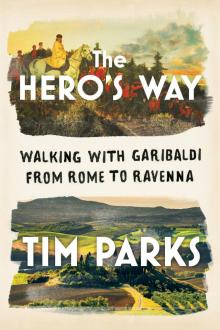 The Hero's Way
The Hero's Way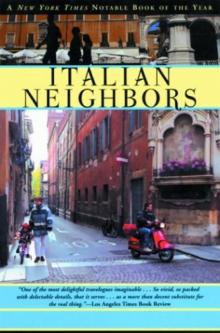 Italian Neighbors
Italian Neighbors Goodness
Goodness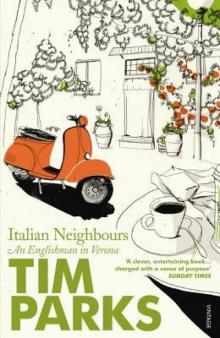 Italian Neighbours_An Englishman in Verona
Italian Neighbours_An Englishman in Verona Italian Neighbours
Italian Neighbours Juggling the Stars
Juggling the Stars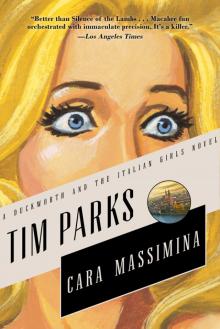 Cara Massimina
Cara Massimina Cleaver
Cleaver Where I'm Reading From
Where I'm Reading From Dreams of Rivers and Seas
Dreams of Rivers and Seas The Fighter
The Fighter In Extremis
In Extremis Painting Death
Painting Death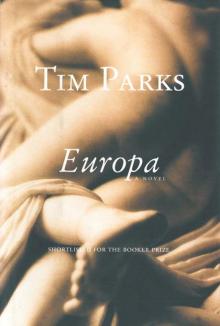 Europa
Europa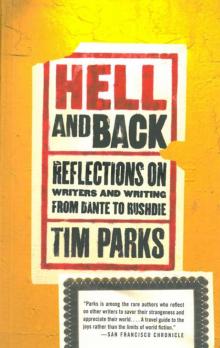 Hell and Back
Hell and Back Judge Savage
Judge Savage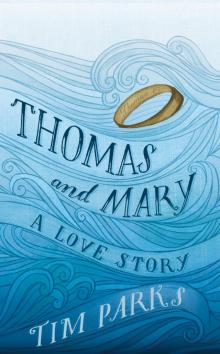 Thomas and Mary
Thomas and Mary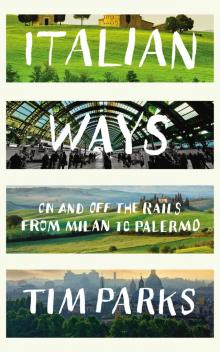 Italian Ways
Italian Ways Rapids
Rapids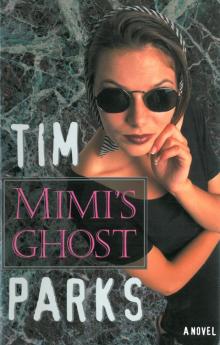 Mimi's Ghost
Mimi's Ghost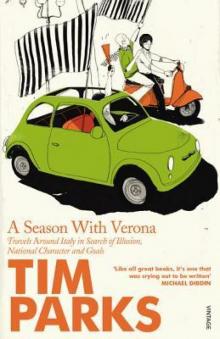 A Season With Verona
A Season With Verona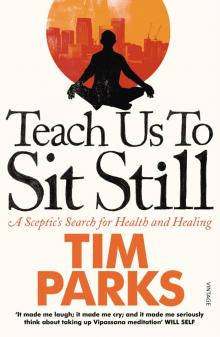 Teach Us to Sit Still
Teach Us to Sit Still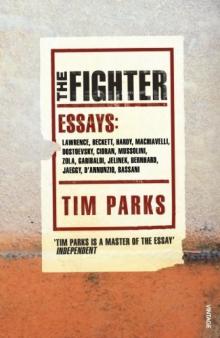 The Fighter_Literary Essays
The Fighter_Literary Essays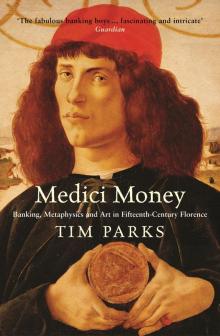 Medici Money
Medici Money